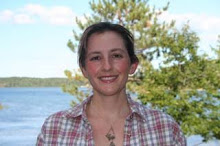As I indicated on this blog more than three years ago, I am very grateful for my hubby, Dan, and his random acts of kindness (such as bringing home a harvest cookie from one of our favorite coffeehouses in the French Quarter, just to distract me momentarily from impending deadlines). We've been together for more than 13 years (married for nearly 12), and I can't imagine my life without him...
...which is why I was terrified at the thought of losing him in late October. That's when, as I explained on my American Nomad blog, what initially resembled a mere stomach flu turned out to be, just five days before Halloween, a case of massive internal bleeding – to such an extreme degree that, if I hadn't gotten Dan to the hospital when I did, his low blood count would have resulted in a potentially fatal heart attack.
Despite a massive, ever-growing hospital bill, I'm incredibly grateful to the staff of the Tulane Medical Center in downtown New Orleans for saving my husband's life – and I'm happy to report that he's doing much better these days – and back to his old tricks of thoughtful generosity.
About two weeks ago, for instance, he celebrated my 36th birthday with his usual gusto, despite the fact that he was still recovering from his unexpected hospital stay – and that birthdays always make me feel a little melancholy. Apparently, he doesn't mind that, come birthday time, I often fret about the children yet to be born (yes, I know my biological clock won't last forever) and the novels yet to be published – he just enjoys celebrating my existence, which, I must admit, makes me very happy.
So, on Friday, November 30 – which, incidentally, also happens to be Mark Twain's birthday
– Dan surprised me with a beautiful new bike. It's a bright blue, vintage-style Schwinn, with fat tires, a wide seat, an awesome headlight, a handy storage rack, only one speed (thank goodness!), and vivid sunflowers all along the frame – and it's girlie to the max! No wonder Schwinn calls it a “Slik Chik.” Of course, that doesn't refer to the “chick” riding it through the French Quarter. As many friends and relatives can attest, I'm not the most graceful individual, but so far, I have yet to have a mishap on my new bike.
Naturally, the bike wasn't the only birthday present from my awesome honey. On that day, he also treated me to a scrumptious dinner at Bayona, lured me to our favorite Irish pub, and took me to my first New Orleans Comic Con, where he bought me two more wonderful presents: a replica of the Angel puppet from the classic Angel episode “Smile Time” (Fellow Joss Whedon fans may understand my glee at having this particular doll in the house.) and a bad-ass knife to add to my small collection (one that I started as an adolescent). Only Danny knows me so well – and for that, plus so many other reasons, I'm grateful to be married to such a wonderful guy! I love you, honey!




























